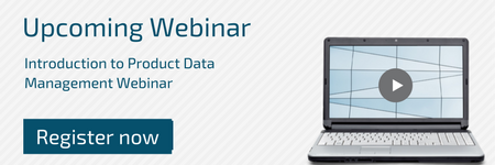The Internet of Things (IoT) is already changing the way products are designed and developed. The ability of smart, connected products to feedback important information from the field directly to the manufacturer means that organisations can access more insight and data than ever before. Fundamentally, this helps to improve future product iterations and even new product lines.

But to enable this gear shift, companies need to be set-up in a way that allows them to take advantage; they need to have the systems and processes in place to enable this data to be used competitively. Here are four product design and development trends that are going to shape 2018 and enable companies to better utilise IoT.
1. More data means different processes - IoT will change the way product information is stored in the organisation
With more product data than ever before being fed back to manufacturers from products in the firle, new processes and systems will be essential to organise and manage this information. Adding product information to CAD drawings will no longer be enough. Instead, a complete and consolidated view of all product information in a PLM system will be essential to manage and interpret the growing volume of data
2. Product data being used throughout the organisation - not just in engineering or manufacturing
Typically, product data has remained within engineering and manufacturing departments, However, there are practical use cases for sharing this important information with the rest of the organisation.
For example, it can help marketing teams to create more focussed promotional materials and enable sales teams to sell more effectively. Easy access to product data also improves communications with key stakeholders and ensures everyone has the data that they need to make informed decisions.
3. Using Augmented Reality (AR) in review and sign-off processes
Getting everyone together for a design review can take a lot of time - especially when they aren’t all in the same office. AR means that everyone involved in a design review can visualise, interrogate and share feedback on designs - wherever they are in world.
The flexibility of AR means that stakeholders can view a 3D version of the design, walk around it and view it from all different angles and even explore the details of a model. This means that they can access the level of product information that is required for their job role.
4. Transitioning to cloud-based PLM systems, to enable rapid transformations
Cloud-based PLM systems enable companies to deploy faster because they aren’t reliant on having to setup and maintain the system on-premise. They remove the burden of hosting and can help to reduce the overall cost of the system.
Additionally, many organisations are exploring SaaS options for the PLM system. The advantage of this approach is that the PLM vendor managed upgrades and updates on behalf of their customers.
